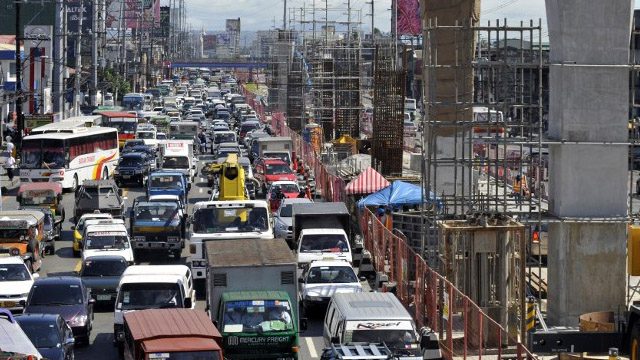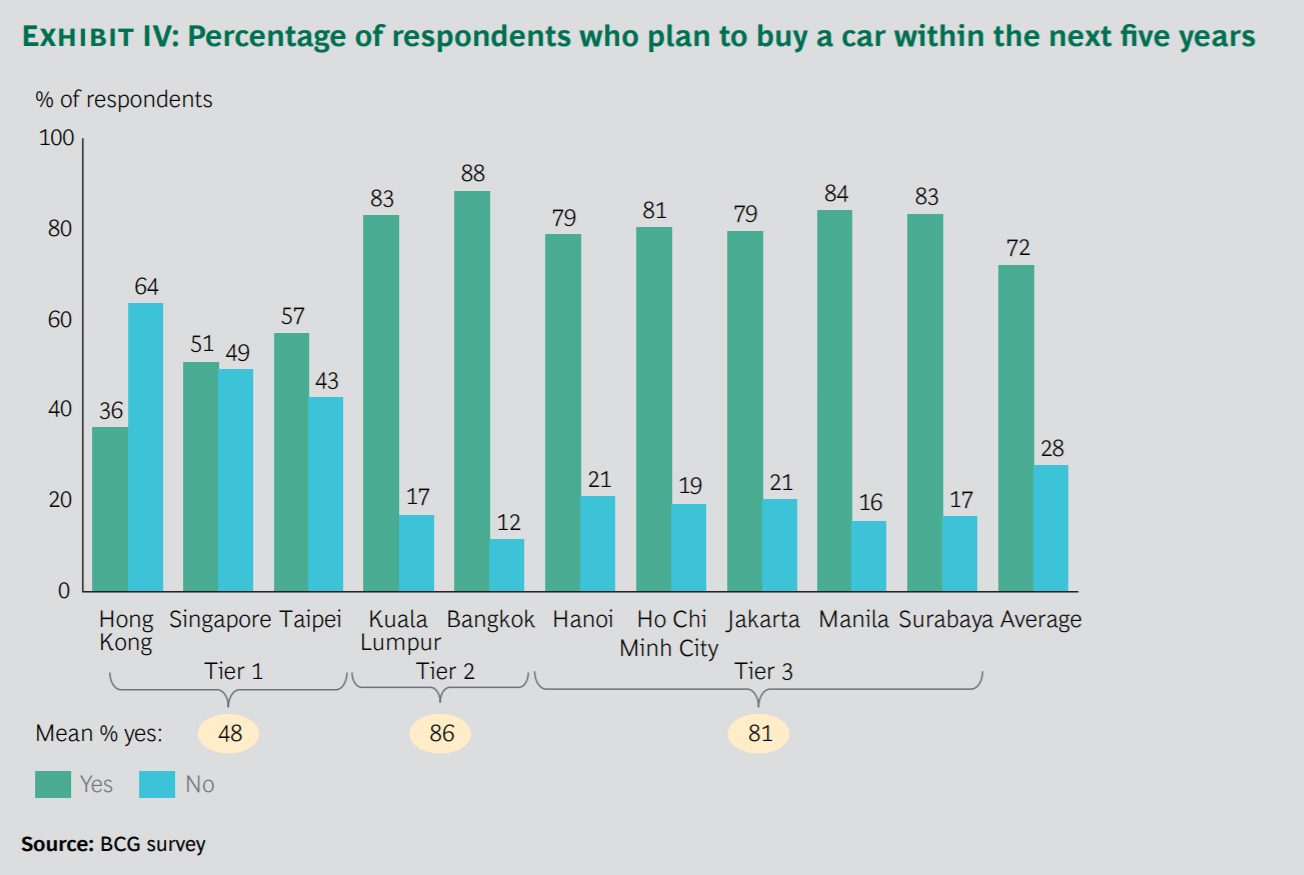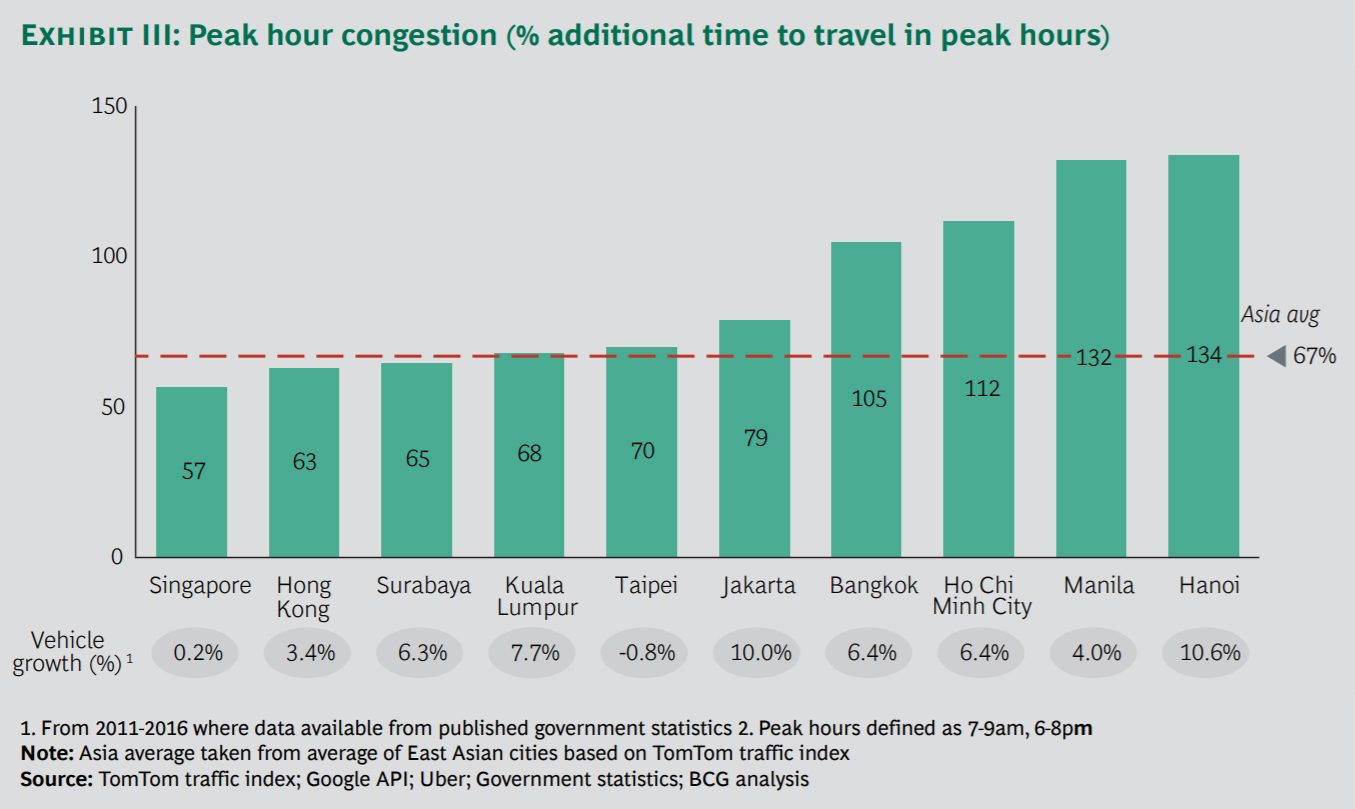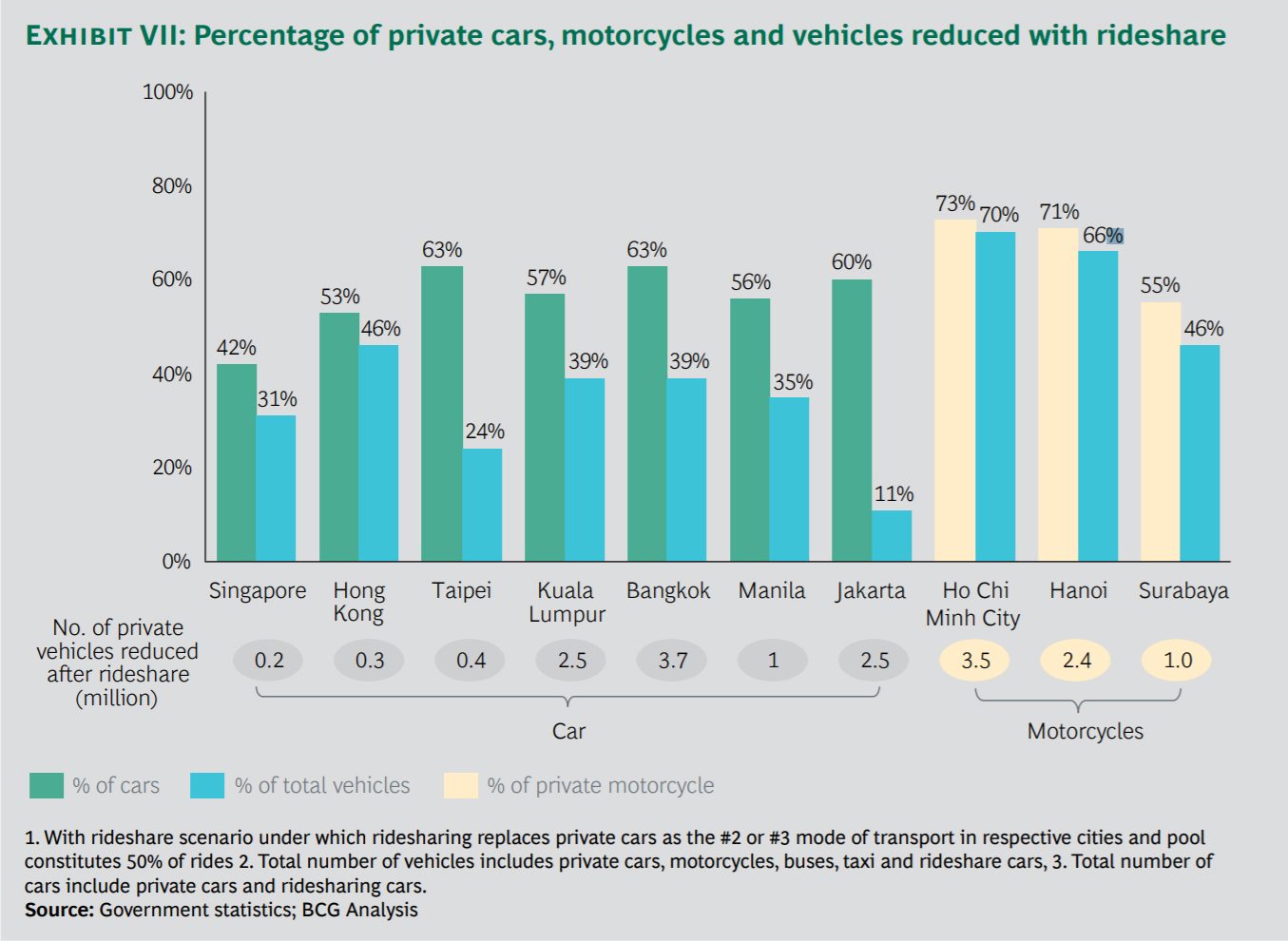SUMMARY
This is AI generated summarization, which may have errors. For context, always refer to the full article.

MANILA, Philippines – Metro Manila commuters and motorists alike spend more than an hour, on average, in traffic every day, placing the Philippines’ capital region the 3rd worst in traffic in Southeast Asia.
This was among the findings of a recent survey conducted as part of a study called “Unlocking Cities,” done by global firm Boston Consulting Group (BCG).
The study, commissioned by ride-sharing platform Uber, looks at the impact of ridesharing in Southeast Asia. The accompanying survey was done from September to October, covering around 300 respondents from Southeast Asian cities.
The survey places Metro Manila 3rd worst in the region, with an average of 66 minutes stuck in traffic daily. It comes after Bangkok, Thailand, which is said to have the worst traffic (72 minutes), and 2nd worst Jakarta, Indonesia (68 minutes).
The best performers in terms of traffic are Singapore (30 minutes) and Hong Kong (35 minutes).
In Metro Manila, on top of the 66-minute traffic experience, drivers also spend an average of 24 minutes per day searching for parking.
Traffic woes as economy improves

The BCG survey results also indicated that traffic may worsen, as 84% of Metro Manila respondents said they plan to buy a car in the next 5 years.
At the same time, however, 37% of Metro Manila respondents said they would be “highly willing” to forgo purchasing a vehicle if ridesharing can meet their transport requirements.
As expected, travel time more than doubles during rush hour in the morning and in the evening, according to Metro Manila respondents.

‘Silver lining’
A silver lining, according to the study, is that a portion of potential new vehicles could be used on ride-sharing platforms such as Grab and Uber which would, in theory, lessen the number of overall vehicles on the road at the same time.

The effect would be especially pronounced if half of those cars are used for carpool services, where users would choose to share a ride with others in exchange for a lower fare. Both Grab and Uber offer this.
Assuming 50% of rides are carpool services, BCG estimates that ridesharing could potentially reduce a million private vehicles from Philippine roads.
Regulatory woes, infra buildup
The potential effects of ridesharing, however, assume the presence of optimal conditions which has been far from the case in the Philippines.
Uber itself was recently suspended for a month in the country and fined P190 million for failure to comply with orders of the Land Transportation Franchising and Regulatory Board (LTFRB).
The US–based firm may face even more problems ahead as it confirmed that details of Filipino users were exposed in a data breach that has affected 57 million users worldwide.
The LFTRB also recently ordered the closure of popular motorbike-hailing platform Angkas over questions of legality.
Multilateral agencies have put forward the improvement of public infrastructure as a long-term solution to traffic congestion. The study echoes this, pointing out that Manila, Jakarta, and Ho Chi Minh have all announced plans to invest more than $60 billion in rail infrastructure by 2022.
But according to the study, the “added capacity of rail transport alone will not be sufficient to meet growth in transport demand by 2022.”
It continued: “We estimate that ridesharing adoption between 16% and 40% across these cities is needed in conjunction with public transport to maintain congestion levels today.”
The Philippine government is trying to address the poor infrastructure situation with its Build, Build, Build campaign, which seeks to raise public spending on infrastructure from 5.3% of the gross domestic product (GDP) this year to 7.4% by 2022.
The clock is ticking, however, with the Japan International Cooperation Agency (JICA) estimating that traffic congestion would cost the country P6 billion per day by 2030 if problems are not fixed. – Rappler.com
Add a comment
How does this make you feel?
There are no comments yet. Add your comment to start the conversation.